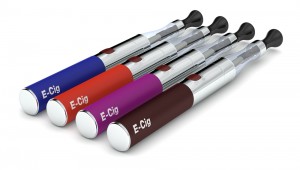by Olivia Maynard @OliviaMaynard17
This blog originally appeared on the Mental Elf site on 30th April 2015.
Both pharmacological (i.e. bupropion and varenicline) and non-pharmacological (i.e. brief advice from physicians) interventions have been shown to be effective in assisting people to stop smoking. Evidence also suggests that combining both these types of interventions can help people to stop smoking and both are considered equally important in quitting success.
Motivational interviewing (MI) is a counselling-based intervention which focusses on encouraging behaviour change by helping people to explore and resolve their uncertainties about changing their behaviour. MI avoids an aggressive or confrontational approach and aims to increase the self-belief of the individual. MI was initially developed to treat alcohol abuse, but may be helpful in encouraging smoking cessation.
In a recent Cochrane systematic review, Lindson-Hawley and colleagues from the Cochrane Tobacco Addiction Group aimed to determine whether or not MI is an effective method of smoking cessation (Lindson-Hawley et al, 2015).

Methods
The authors searched online databases and studies were included if:
- Participants were tobacco users and were not pregnant or adolescents;
- The intervention was based on MI techniques;
- The control group received brief advice or usual care;
- Some monitoring of the quality of the MI intervention was included;
- Smoking abstinence was reported at least 6 months after the start of the programme.
The main outcome measure was smoking abstinence, using the most rigorous definition of abstinence for each study. Biochemically-validated measures of abstinence (i.e., carbon monoxide breath testing or saliva cotinine samples) were also used where available. Those participants lost to follow-up were considered to be continuing to smoke.
Results across studies were combined in a meta-analysis.
Results
Twenty eight studies published between 1997 and 2014 were found to match the strict inclusion criteria.
The total dataset included over 16,000 participants and studies varied in:
- The length of the MI sessions (ranging from 10 to 60 minutes)
- The number of sessions (one to six sessions)
- Who the sessions were delivered by (primary care physicians, hospital clinicians, nurses or counsellors)
Some of the main findings included:
- A modest (26%) increase in quitting among those receiving MI as compared with control (although the true value is likely to lie between 16-36%).
- Sub-group analyses found that:
- MI delivered by primary care physicians increased the likelihood of successful quitting by 349% (53-794%) as compared with control
- When it was delivered by counsellors, quit rates increased by only 25% as compared with control
- MI delivered by nurses was not found to be more effective than control
- Shorter sessions (less than 20 minutes) increased the chances of quitting relative to control by 69%, as compared with longer sessions, which only increased the chances of quitting by 20%.
- There was little difference in the likelihood of quitting between single MI sessions (26%) and multiple sessions (20%) as compared with control.
- There was little difference between MI delivered face-to-face as compared with via the telephone only.
- There was no evidence for a difference for MI delivered to smokers who were motivated to quit as compared with those with low levels of motivation.

Strengths
This review adds 14 additional studies to a previous review conducted in 2010. The addition of these new studies altered the results of the original review very little, providing strong support for the validity of these findings.
Two previous systematic reviews have also examined the effectiveness of MI for smoking cessation, observing modest positive effects of MI (Heckman et al., 2010, Hettema and Hendricks, 2010), although these studies used a broader inclusion criteria than used here and therefore may have underestimated the effects of MI.
The majority of studies included in this review adequately reported their design and methods. Some studies did not report information about blinding of the outcome assessment or how participants were allocated to conditions. However, sensitivity analyses indicated that these factors did not influence the findings of the review.
Limitations
The authors report some evidence for publication bias, such that studies reporting a positive effect of MI were more likely to be published, potentially compromising the results of this systematic review.
Eight of the 24 studies did not use biochemically-validated measures of abstinence. When analyses excluded these studies, the size of the beneficial effect of MI increased. Future research should use the biochemically-validated abstinence measures so as to ensure that smoking cessation is reliably reported.
Conclusions
These results indicate that MI is more effective at promoting smoking cessation than usual care or brief advice, although the effect is modest.
Some components of MI counselling appear to increase the effectiveness of MI for smoking cessation, including delivery by a primary care physician. The reviewers suggest that physicians may be better placed to use the MI approach given their established rapport with the patient. However, this effect is based on only two studies and therefore the importance of physician delivery should not be overstated.
Shorter sessions and fewer follow-ups were also found to be more effective than longer sessions with more follow-up sessions. One explanation given by the authors is that a single session is enough to motivate someone to quit smoking. Prolonging the time before the quit date may mean participants lose focus on their goal to stop smoking.
While MI seems to be effective in promoting smoking cessation, future research should continue to explore the components of MI which optimise the success of this intervention. The relationship between non-pharmacological interventions such as MI and pharmacological interventions should also be considered.

Links
Primary paper
Lindson-Hawley N, Thompson TP, Begh R. Motivational interviewing for smoking cessation. Cochrane Database of Systematic Reviews 2015, Issue 3. Art. No.: CD006936. DOI: 10.1002/14651858.CD006936.pub3.
Other references
Heckman, C. J., Egleston, B. L. & Hofman, M. T. (2010). Efficacy of motivational interviewing for smoking cessation: a systematic review and meta-analysis. Tobacco Control, 19, 410-416.
Hettema, J. E. & Hendricks, P. S. (2010). Motivational interviewing for smoking cessation: A meta-analytic review. Journal of Consulting and Clinical Psychology, 78, 868-884. [DARE summary]

 Nine months later I was on my way to Heathrow for a two month stint collecting data on a cannabis administration study. I was both excited and apprehensive. I have never lived more than a 3 hour drive away from family, and have always been in a city where I have known people. I didn’t know whether I would get homesick, or whether I would make friends on my trip abroad. These feelings of apprehension soon disappeared in the first few hours of my first day at the New York Psychiatric Institute. Everyone I met was so friendly and welcoming, even the many morning commuters who stopped to help the lone Brit who was obviously puzzled by the subway map at 7.30am.
Nine months later I was on my way to Heathrow for a two month stint collecting data on a cannabis administration study. I was both excited and apprehensive. I have never lived more than a 3 hour drive away from family, and have always been in a city where I have known people. I didn’t know whether I would get homesick, or whether I would make friends on my trip abroad. These feelings of apprehension soon disappeared in the first few hours of my first day at the New York Psychiatric Institute. Everyone I met was so friendly and welcoming, even the many morning commuters who stopped to help the lone Brit who was obviously puzzled by the subway map at 7.30am. I was to spend the next six weeks collecting data for a study examining the neuro-behavioural mechanisms of decisions to smoke cannabis at the Substance Use Research Center in the New York Psychiatric Institute at Columbia University. This research centre is unique; it is one of the largest drug administration centre in the world and has licenses to administer a wide variety of drugs, including cannabis, cocaine and heroin. This means that much of the research conducted here is cutting edge. The aim of the study that I would be working on was to shed light on how and why drug abusers repeatedly make decisions to take drugs despite substantial negative consequences. The study used brain imaging (fMRI) to examine the neural and behavioural processes involved in decisions to self-administer cannabis, compared to decisions to eat food, in regular cannabis users. We also examined the influence of drug and food cues on the processes underlying these decisions. To do this, participants were recruited as inpatients and stayed with us in the lab for a week. Data collection for this study is still ongoing, but I will be sure to write another blog post with what we found when the results are available.
I was to spend the next six weeks collecting data for a study examining the neuro-behavioural mechanisms of decisions to smoke cannabis at the Substance Use Research Center in the New York Psychiatric Institute at Columbia University. This research centre is unique; it is one of the largest drug administration centre in the world and has licenses to administer a wide variety of drugs, including cannabis, cocaine and heroin. This means that much of the research conducted here is cutting edge. The aim of the study that I would be working on was to shed light on how and why drug abusers repeatedly make decisions to take drugs despite substantial negative consequences. The study used brain imaging (fMRI) to examine the neural and behavioural processes involved in decisions to self-administer cannabis, compared to decisions to eat food, in regular cannabis users. We also examined the influence of drug and food cues on the processes underlying these decisions. To do this, participants were recruited as inpatients and stayed with us in the lab for a week. Data collection for this study is still ongoing, but I will be sure to write another blog post with what we found when the results are available. I found this research fascinating and it was a pleasure to be involved in the work carried out in this department. The experience was made even more enjoyable by the people I was working with. There were many office conversations about the British and American slang that was being used, many lunchtime trips to Chipotle (an American fast food restaurant that I am definitely missing since my return to the UK), and several Friday evening trips to the local Irish bar. One office memory that will always stick in my mind was meeting a very accomplished researcher in the field of my PhD, a researcher that was definitely someone I should be impressing. Upon entering this individuals office on an extreme
I found this research fascinating and it was a pleasure to be involved in the work carried out in this department. The experience was made even more enjoyable by the people I was working with. There were many office conversations about the British and American slang that was being used, many lunchtime trips to Chipotle (an American fast food restaurant that I am definitely missing since my return to the UK), and several Friday evening trips to the local Irish bar. One office memory that will always stick in my mind was meeting a very accomplished researcher in the field of my PhD, a researcher that was definitely someone I should be impressing. Upon entering this individuals office on an extreme I did, of course, take every opportunity to explore New York. I was lucky enough to get tickets to watch the New York Yankees beat the Boston Red Sox at the Yankee Stadium, which was also one of the last games played by baseball-legend Derek Jeter. I made several trips to the American Natural History Museum (my favourite type of museum, and this one cannot be done in a day), and while there saw a live spider show, a 3D film about Great White Sharks and a full T-Rex skeleton. The glorious weather allowed for several leisurely strolls around Central Park. And, of course, the American food definitely needs a mention. If anyone reading this takes a trip over the Atlantic, I would definitely recommend visiting Big Daddy’s Diner for what could be the best milkshake on the planet. And don’t be shy about trying a hotdog from one of the carts that can be found on nearly every street corner. The reason there are so many of them is that they’re delicious! I would also recommend a trip to the Russian Tea Rooms for caviar afternoon tea, an evening at the New York Metropolitan Opera (if that’s your cup of tea), and a trip to Coney Island.
I did, of course, take every opportunity to explore New York. I was lucky enough to get tickets to watch the New York Yankees beat the Boston Red Sox at the Yankee Stadium, which was also one of the last games played by baseball-legend Derek Jeter. I made several trips to the American Natural History Museum (my favourite type of museum, and this one cannot be done in a day), and while there saw a live spider show, a 3D film about Great White Sharks and a full T-Rex skeleton. The glorious weather allowed for several leisurely strolls around Central Park. And, of course, the American food definitely needs a mention. If anyone reading this takes a trip over the Atlantic, I would definitely recommend visiting Big Daddy’s Diner for what could be the best milkshake on the planet. And don’t be shy about trying a hotdog from one of the carts that can be found on nearly every street corner. The reason there are so many of them is that they’re delicious! I would also recommend a trip to the Russian Tea Rooms for caviar afternoon tea, an evening at the New York Metropolitan Opera (if that’s your cup of tea), and a trip to Coney Island. Although it was daunting going abroad for that length of time to begin with, I don’t think I would be having those feelings again and I would definitely jump at any opportunity to work in a different environment in the future. I am very grateful that I am a PhD student in a large working group like TARG, as without this I probably would not have come across opportunities such as this one. This experience has taught me the importance of inter-disciplinary research, and the need for several fields contributing evidence to a much larger research question. Since this trip, I have been successful in a fellowship application allowing me 9 months in a different department at the University of Bristol, an application that I probably would not have made if it wasn’t for my experience at the Columbia University. I am an epidemiologist and do not have any plans to change that; however I do plan to conduct more interdisciplinary research in the future. I would like to that Gill (and everyone in her lab group) for welcoming me and making this trip possible. I look forward to hopefully working with you again in the future…
Although it was daunting going abroad for that length of time to begin with, I don’t think I would be having those feelings again and I would definitely jump at any opportunity to work in a different environment in the future. I am very grateful that I am a PhD student in a large working group like TARG, as without this I probably would not have come across opportunities such as this one. This experience has taught me the importance of inter-disciplinary research, and the need for several fields contributing evidence to a much larger research question. Since this trip, I have been successful in a fellowship application allowing me 9 months in a different department at the University of Bristol, an application that I probably would not have made if it wasn’t for my experience at the Columbia University. I am an epidemiologist and do not have any plans to change that; however I do plan to conduct more interdisciplinary research in the future. I would like to that Gill (and everyone in her lab group) for welcoming me and making this trip possible. I look forward to hopefully working with you again in the future…




